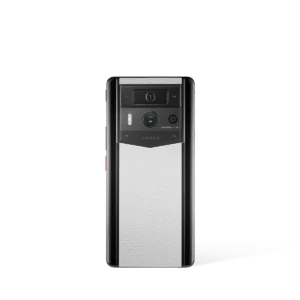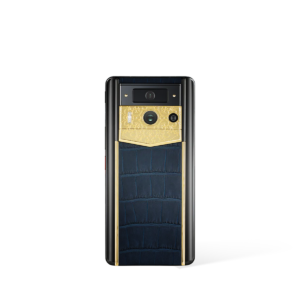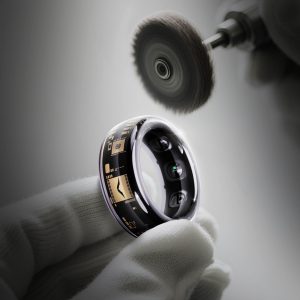Are you tired of cracked screens and phones that die after a single drop? This study dives into the often-overlooked financial aspect of rugged smartphones, revealing what you truly pay for their legendary toughness.
What You'll Learn:
- The core features that define a military-grade phone and their impact on cost.
- Practical considerations and best practices when choosing and using these devices.
- The tangible benefits and measurable results of investing in durable mobile technology.
- A data-driven comparison of pricing and feature sets across popular rugged models.
Understanding Military Grade Phones
Military Grade Phone Fundamentals
A military-grade phone, often referred to as a rugged smartphone, is built to withstand environments and conditions that would quickly destroy standard consumer devices. This robustness isn't just a marketing gimmick; it's achieved through specific design principles and material choices. The core of their durability lies in meeting stringent MIL-STD-810G/H certifications. These are U.S. military standards that test resilience against a range of hazards, including:
- Extreme Temperatures: From freezing cold to scorching heat.
- Impact and Drops: Surviving multiple falls onto hard surfaces.
- Vibration: Enduring constant shaking without functional degradation.
- Water and Dust Ingress: Achieving high IP ratings (like IP68 or IP69K) for protection against submersion and fine particle intrusion.
- Shock and Pressure: Withstanding sudden jolts and significant atmospheric pressure changes.
These features translate into thicker casings, reinforced corners, often using materials like polycarbonate, rubber, and tempered glass. Internal components are also shock-mounted and sealed to prevent damage from external forces.
Key Concepts
Beyond the physical build, several key concepts differentiate military-grade phones:
- IP Ratings (Ingress Protection): This two-digit code indicates the level of protection against solids (first digit) and liquids (second digit). For rugged phones, an IP68 rating is common, meaning dust-tight and protected against continuous immersion in water. IP69K offers even higher protection against high-pressure, high-temperature water jets.
- MIL-STD-810G/H Compliance: As mentioned, this is the benchmark. It's crucial to look for specific test results or certifications rather than just a claim.
- Enhanced Connectivity: Many rugged phones include features like push-to-talk (PTT) buttons, dedicated GPS modules for accuracy in challenging terrain, and sometimes even satellite communication capabilities.
- Screen Durability: Beyond just Gorilla Glass, rugged phones often feature thicker, more scratch-resistant screens with raised bezels to protect them from direct impact.
- Battery Life: To support extended use in remote or demanding conditions, these phones often boast larger battery capacities, sometimes with swappable options.
The cost premium associated with these features is directly tied to the research and development, specialized materials, rigorous testing, and robust manufacturing processes required.
Military Grade Phone Implementation
Getting Started
Implementing a military-grade phone into your workflow or personal use is straightforward, but requires mindful selection.
- Assess Your Needs: Determine the specific environmental challenges your phone will face. Are you working on a construction site, hiking in remote areas, or simply prone to accidental drops? This will guide your choice of IP rating and MIL-STD compliance level.
- Research Models and Certifications: Don't just rely on marketing. Look for detailed specifications and proof of MIL-STD-810G/H and IP ratings. Reputable brands will often provide detailed test reports or third-party verification.
- Consider Form Factor and Ergonomics: Rugged phones are inherently bulkier. Hold them if possible, or read reviews about their grip and usability with gloves.
- Software and Features: While hardware is key, ensure the phone's operating system and included software meet your functional requirements. Some rugged phones come with specialized apps for field work.
- Budget Allocation: Be prepared for a higher initial investment compared to standard smartphones.
Best Practices
To maximize the lifespan and utility of your military-grade phone:
- Regular Cleaning: While durable, dust and grime can still accumulate, especially around ports. Use a soft brush or compressed air to keep them clean.
- Port Protection: Ensure charging port covers are securely closed when not in use to maintain water and dust resistance.
- Screen Protector and Case (Optional but Recommended): Even with robust screens, an additional screen protector can prevent minor scratches. While the phone itself is rugged, a compatible rugged case can offer an extra layer of defense for extreme scenarios.
- Firmware Updates: Keep your phone's operating system and firmware up-to-date. Manufacturers often release patches that improve performance and security.
- Battery Management: While designed for longevity, follow best practices for battery charging and care to ensure optimal performance over time.
“Investing in a rugged phone isn't just about buying a durable device; it's about reducing downtime and the cost of replacements in harsh environments.” – Field Operations Manager
Military Grade Phone Benefits and Results
Expected Outcomes
The primary outcome of using a military-grade phone is unparalleled reliability and longevity in demanding conditions. Users can expect:
- Reduced Repair Costs: Significantly lower likelihood of screen cracks, water damage, or internal component failure.
- Minimized Downtime: No need to replace a broken phone mid-project or mid-expedition.
- Enhanced Productivity: The confidence to use your device in any situation without worry.
- Improved Data Security: Less risk of data loss due to physical damage.
- Greater Operational Freedom: The ability to work or play in environments previously considered too harsh for smartphones.
Success Metrics
Measuring the success of a military-grade phone investment can be done through several metrics:
- Device Lifespan: Comparing the typical lifespan of a rugged phone versus a standard phone under similar usage conditions.
- Cost of Ownership: Calculating the total cost over 3-5 years, including initial purchase price, repairs, and replacements.
- Reduction in Support Tickets/Breakages: For businesses, tracking the decrease in reported phone damage and replacement requests.
- User Satisfaction: Anecdotal evidence and surveys highlighting user confidence and satisfaction with device performance in their work or leisure activities.
Let's look at a comparative cost analysis:
| Feature/Model | Standard Smartphone (e.g., High-End Consumer) | Mid-Range Rugged Phone | Premium Rugged Phone |
| Initial Cost | $700 – $1,200 | $400 – $700 | $700 – $1,200+ |
| Drop Resistance | Low (prone to damage) | High (MIL-STD tested) | Very High (MIL-STD) |
| Water/Dust Proof | Limited (e.g., IP68 on some) | High (IP68/IP69K) | Very High (IP68/IP69K) |
| Screen Durability | Moderate (Gorilla Glass) | High (reinforced) | Very High (reinforced) |
| Battery Life | Average (8-12 hours use) | Above Average (12-24h) | Excellent (24h+) |
| Typical Lifespan | 2-3 years | 3-5 years | 4-6 years |
| Repair Cost | High (screen replacement alone can be $100+) | Low to Moderate | Low to Moderate |
| Total Cost (3 yrs) | $800 – $1,500 (incl. 1 replacement) | $400 – $700 | $700 – $1,200+ |
This table highlights that while the initial investment for premium rugged phones can be comparable to high-end standard smartphones, their extended lifespan and reduced repair needs often lead to a lower total cost of ownership over time. Mid-range rugged phones offer a compelling balance of durability and affordability.
FAQ (Frequently Asked Questions)
Q: What does “military-grade” actually mean for a phone?
A: It means the phone has been tested and certified to meet specific U.S. military standards (like MIL-STD-810G/H) for durability against conditions such as extreme temperatures, drops, shock, vibration, and water immersion. It's a benchmark for ruggedness.
Q: Are military-grade phones significantly more expensive than regular smartphones?
A: Generally, yes. The increased cost comes from the use of specialized materials, reinforced construction, extensive testing, and often larger batteries and enhanced components. However, the total cost of ownership can be lower due to reduced repair and replacement needs.
Q: Will a military-grade phone survive being run over by a car?
A: While many are extremely robust, surviving a direct impact from a car is beyond the scope of standard MIL-STD testing. They are designed for drops, impacts, and harsh environmental conditions, not extreme vehicular trauma. Always check specific product specifications.
Q: Do I need a screen protector or case for a military-grade phone?
A: While they are built to be incredibly tough, an additional screen protector can offer peace of mind against minor scratches. A case is usually unnecessary as the phone's chassis provides the protection, but some users opt for a compatible rugged case for extreme scenarios.
Q: How do IP ratings on rugged phones work?
A: IP ratings (Ingress Protection) indicate protection against solids and liquids. For example, IP68 means the phone is dust-tight (6) and protected against continuous immersion in water up to a certain depth and duration (8). IP69K offers even higher protection against high-pressure water jets.







